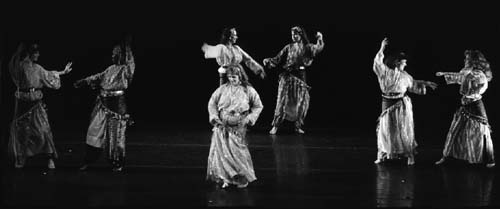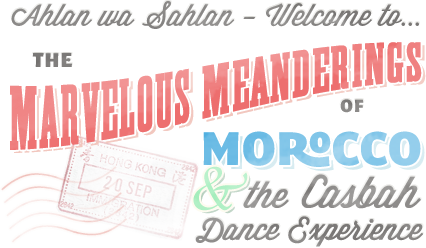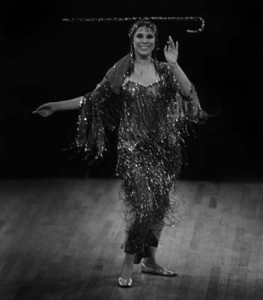
In Classical Arabic, sheikha is the feminine form of sheikh: a person of knowledge, experience, wisdom. Sheikha can mean a woman of knowledge and experience, the wife of the sheikh or both. In Darija (Moroccan Arabic), sheikha denotes a woman with carnal knowledge extensive enough to teach others. (In Upper Egyptian/ Saidi Arabic, a sheikha is a “white witch”, an herbal medicine woman of the healing arts, to whom you go for remedies of a benevolent variety. For “black magic” you go to someone else.)
In Arabic one woman is sitt, two women are sittatayn, three or more is sittaat. So with the word sheikha, two are scheikhatayn, more are schikhatt. What is Schikhatt? A group of sheikhas!
This is a Moroccan dance (in Algeria, it’s called Medahat), originally performed at pre-wedding parties by a “Sheikha” & her group of “Schikhatt”, first for the women´s feasts & then the men´s, this lusty dance is now an at-home diversion for Moroccan city women.
The Sheikha, who is local and knows everything about everyone at the party, begins by singing impromptu verses poking fun at the family and guests alike. Between verses, her troupe dances the Schikhatt, exaggeratedly moving hips, stomach and breasts, for this is very definitely an erotic dance and the movements have to be visible in spite of the large, loose kaftans and d’finas they wear. The Schikhatt has nothing to do with Raqs Sharqi, despite the fact that both consist mainly of control and articulation of torso muscles. Thanks to recent exposure to Lebanese and Egyptian movies, videos and DVDs, Raqs Sharqi movements are also showing up in the Schikhatt of sophisiticated city-dwellers.
You can read more about Schikhatt in “Dance As Community Identity” in the Articles section of this website.
The photo is of the Casbah Dance Experience performing in concert at the Riverside Dance Festival. Leora is doing the solo.

